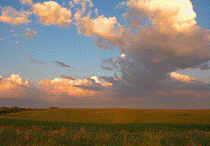
Proceedings of the North American Prairie Conferences
Date of this Version
2004
Document Type
Article
Abstract
Seed banks, the reserve of viable seeds dormant in the soil, function in several important roles in the population and community dynamics of plant communities. Identification of the seed bank can furnish information on the vegetation history of a habitat, predict the future composition of the plant community, and provide insight on the seed viability and biology of plant species. Although seed banks of prairie ecosystems have been well studied, very little information exists on seed banks of reconstructed prairie. Identification of seed bank populations of reconstructed prairie provides a means to evaluate the success of restorations and establishes baseline data to monitor the development of prairie over time. A seed bank study of reconstructed prairie in central Iowa was conducted from March 2000 to July 2002. Samples of the seed bank in the top 3 cm of soil were collected at 15 sites on the reconstruction at the beginning of its fifth growing season. A seedling assay was used to identify and count seeds. A total of 2,693 seedlings and 62 plant taxa were observed in the seed bank. Out of the 78 plant species seeded at the study sites, 15 species were observed in the seed bank. Three of these were non-native species seeded by mistake. Among the other 47 species observed, about half were native and half were exotic. The most abundant species in the seed bank included green carpetweed (Mollugo vertieillaw), common yellow oxalis (Oxalis striew), witchgrass (Panicum capillare), hairy white oldfield aster (Symphyotrichum pilosum), and amaranth (Amaranthus rudis). Total seed densities ranged from 293 seeds/m2 /3 cm to 12,247 seeds/m2/3 cm. An ordination of the seed bank samples with the vegetation in 1999 and 2000 clearly shows a high dissimilarity between vegetation and seed bank as well as much greater variation in the seed bank composition than in the vegetation.


Comments
Published in Dave Egan & John A. Harrington, editors, Proceedings of the 19th North American Prairie Conference: The Conservation Legacy Lives On..., University of Wisconsin-Madison, August 8-12, 2004 (Proceedings of the North American Prairie Conference, 19), Madison, WI: University of Wisconsin-Madison, 2004.